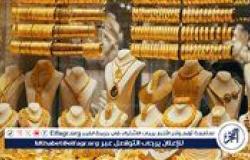أكد أحمد كجوك، نائب وزير المالية، حرص الحكومة المصرية على تعزيز التعاون الاقتصادي والاستثماري مع البرازيل ودول مجموعة “البريكس”، خاصة في مجالات المشروعات الإنتاجية والصديقة للبيئة، وتيسير حركة التجارة بين الجانبين.
وخلال لقائه مع فرناندو حداد، وزير المالية البرازيلي، على هامش اجتماعات مجموعة “البريكس” في البرازيل، أشار كجوك إلى تطلع مصر للاستفادة من التجربة البرازيلية في تطوير المنظومة الضريبية وتوسيع نطاق الشمول المالي، مشددًا على أهمية تعميق التعاون بين دول “البريكس” والقارة الأفريقية في مجالات تمويل التنمية، والتعامل مع قضايا المناخ، ومبادلة الديون، وتعزيز الأمن الغذائي.
وأضاف أن مصر تأمل في أن تصبح مجموعة “البريكس” منصة فاعلة لدول الجنوب العالمي تسهم في بناء نظام دولي أكثر توازنًا وتنوعًا، لافتًا إلى أهمية توفير أدوات مالية مرنة تدعم تحقيق الأهداف التنموية للاقتصادات الناشئة.
كما أوضح كجوك تطلع مصر إلى دور أكثر فاعلية لبنك التنمية الجديد في دعم المشروعات داخل إفريقيا، من خلال الشراكة الإقليمية مع مصر، خاصة في مجال البنية التحتية والمشروعات الخضراء، مع التركيز على تعزيز الشراكة مع القطاع الخاص، وتوفير تمويلات ميسرة بالعملة المحلية، وتوسيع دور البنك في المنطقة.
وأشار إلى إمكانية استثمار التمويلات منخفضة التكلفة في جذب المزيد من الاستثمارات نحو القطاعات الإنتاجية والتنموية، مؤكدًا أن السياسات المالية المنضبطة والإصلاحات الهيكلية والاقتصادية التي تم تنفيذها عززت من قدرة الاقتصاد المصري على مواجهة التحديات.
واختتم كجوك تصريحاته بالتأكيد على أن مصر تعمل على تهيئة مناخ استثماري واعد يقوم على بناء الثقة مع مجتمع الأعمال، بهدف دعم تنافسية الاقتصاد الوطني وتحقيق نمو مستدام.






